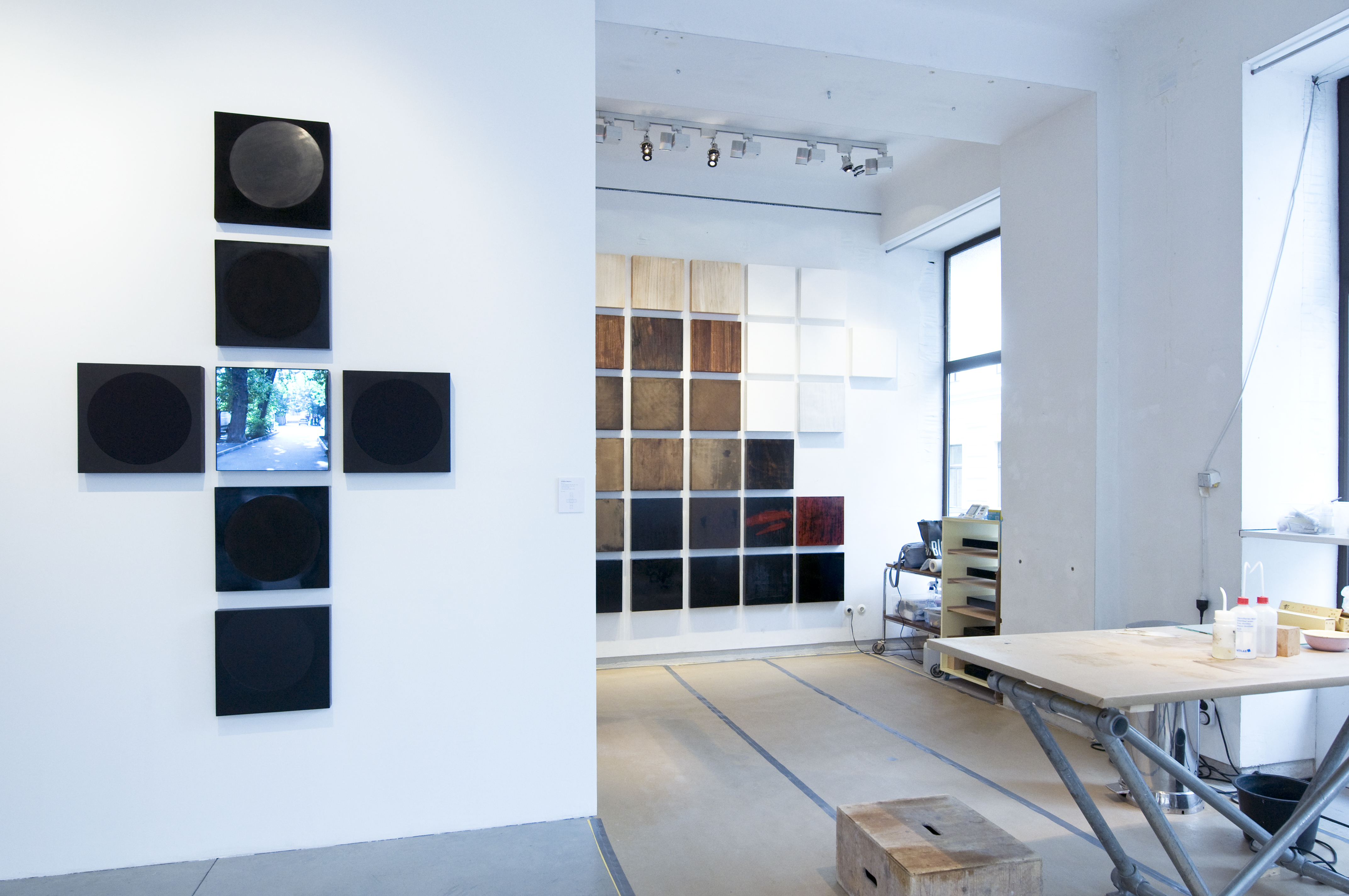
Astrid Edlinger, 'Black Square Sweatshop' exhibition view, 2015
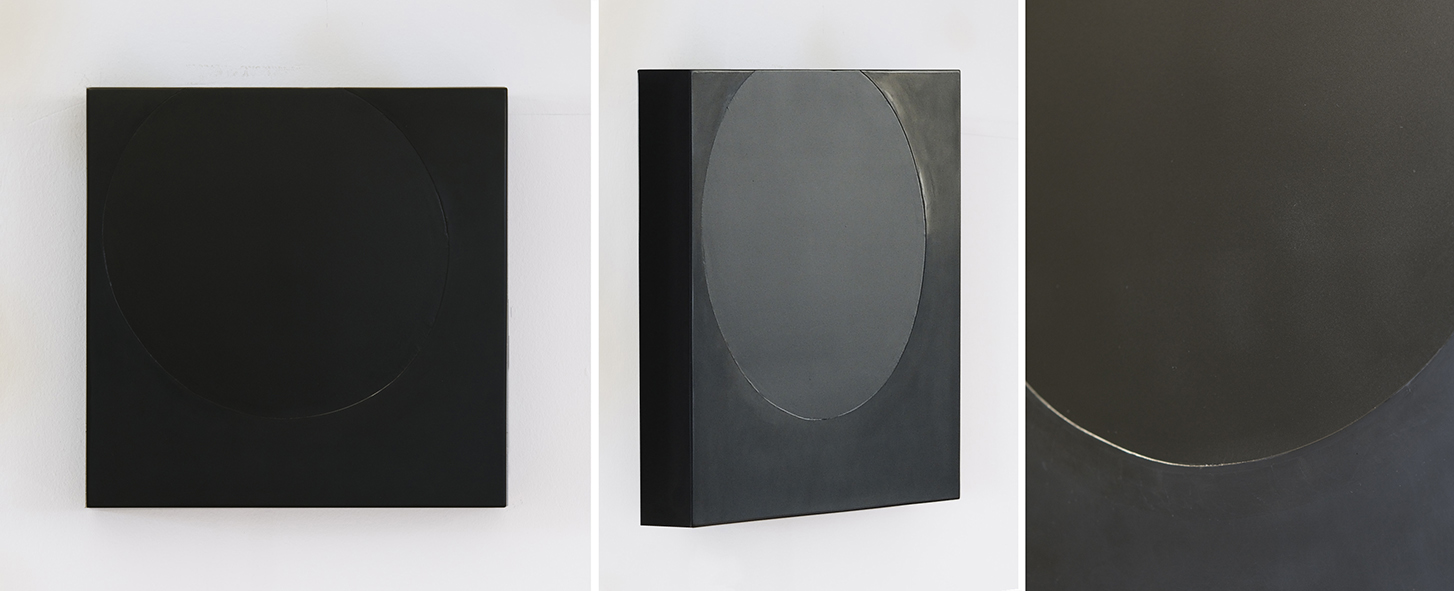
Astrid Edlinger, 100 Black Squares, Square #12. Urushi lacquer on kiri wood, 40 cm x 40 cm

Astrid Edlinger, 'Black Square Sweatshop' exhibition view, 2015.
Formation »Religion / Myth« consisting of 4 urushi-objects | #8 | #9 | #12 | #14
2 speakers | #70 | #71
1 LCD-screen | #90
1 video excerpt | 12min10
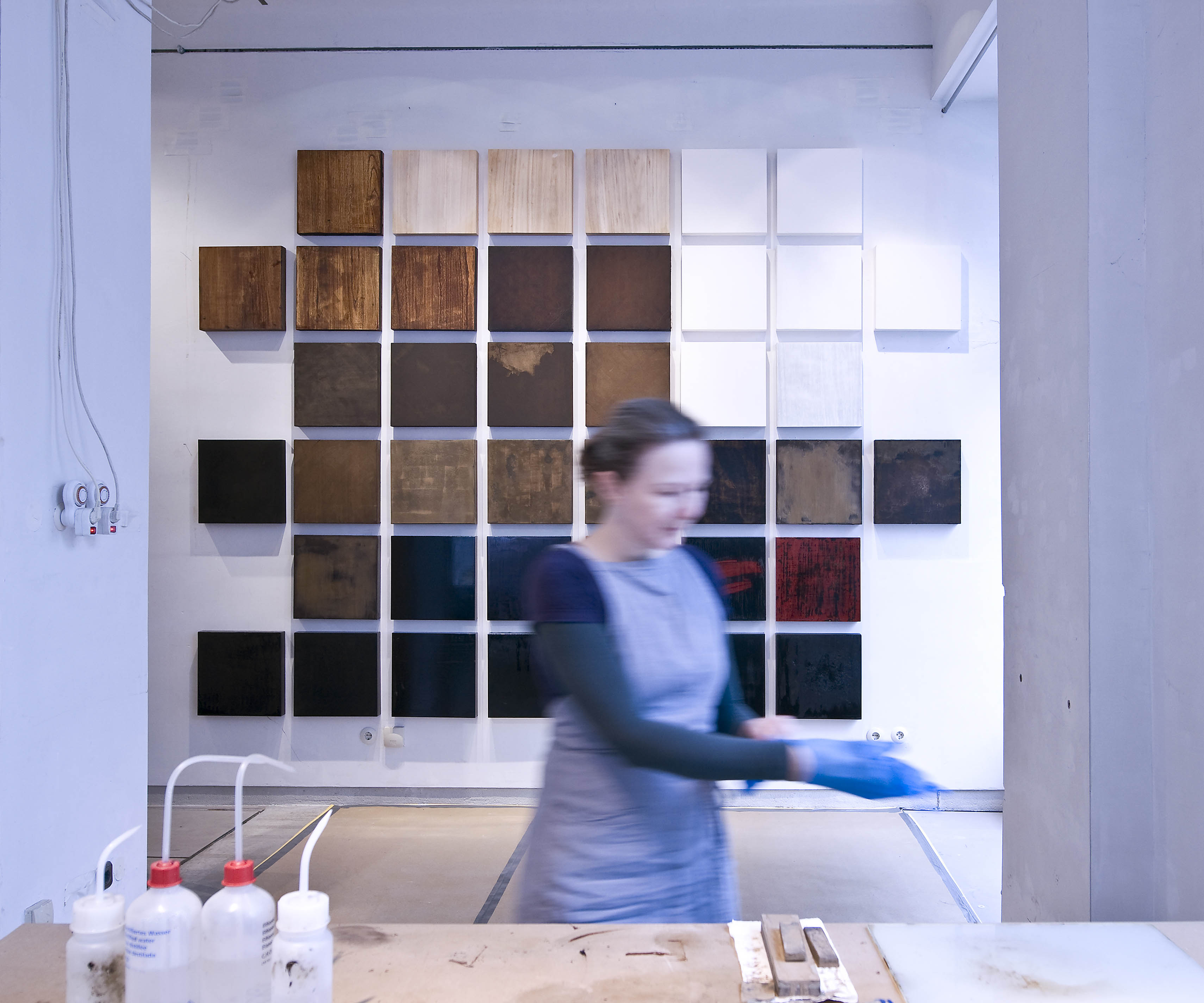
Astrid Edlinger, 100 Black Squares, performatives Herstellen, 2015
Urushi als Material interessiert mich vor allem deswegen, weil es seiner Verarbeitung einen gewissen Widerstand entgegensetzt. Der Prozess ist zeitaufwändig, erfordert Erfahrung, Geduld und Vorsicht (hochpotentes Allergen) und ist nie vollständig kontrollierbar.
Die Erfahrungen, die ich bei der Arbeit mit diesem Material mache, stellen dem Konzept des homo faber, des herstellenden Menschen oder des Menschen als Handwerker und Künstler, wie es explizit besonders bei Hannah Arendt und implizit seit der Antike (Aristoteles) immer wieder beschrieben wird, eine subjektive Wirklichkeit gegenüber, die dem Konzept radikal widerspricht. Um diese Erfahrungen sichtbar zu machen, habe ich eine künstlerische Form entwickelt, die ich Performatives Herstellen nenne. Dabei wird ein Teil des Herstellungsprozesses eines Objektes in den Ausstellungsraum verlegt und wird zusammen mit dem Objekt im jeweiligen Zustand Teil des Ausgestellten.
Während in diesem Prozess die Idee – ganz im Gegensatz zu Arendt's homo faber-Konzept – nicht am Ausgangspunkt steht, ergeben sich im Lauf der Arbeit, in längeren Arbeitspausen oder beim Nachdenken während der Arbeit immer wieder Begriffe und Ideen, die neue Perspektiven und Assoziationsspielräume eröffnen – und die auch das Objekt selbst langfristig verändern.
Astrid Edlinger, 100 Black Squares, Black Square Sweatshop exhibition video, 2015

Astrid Edlinger, 100 Black Squares, narration, 2015
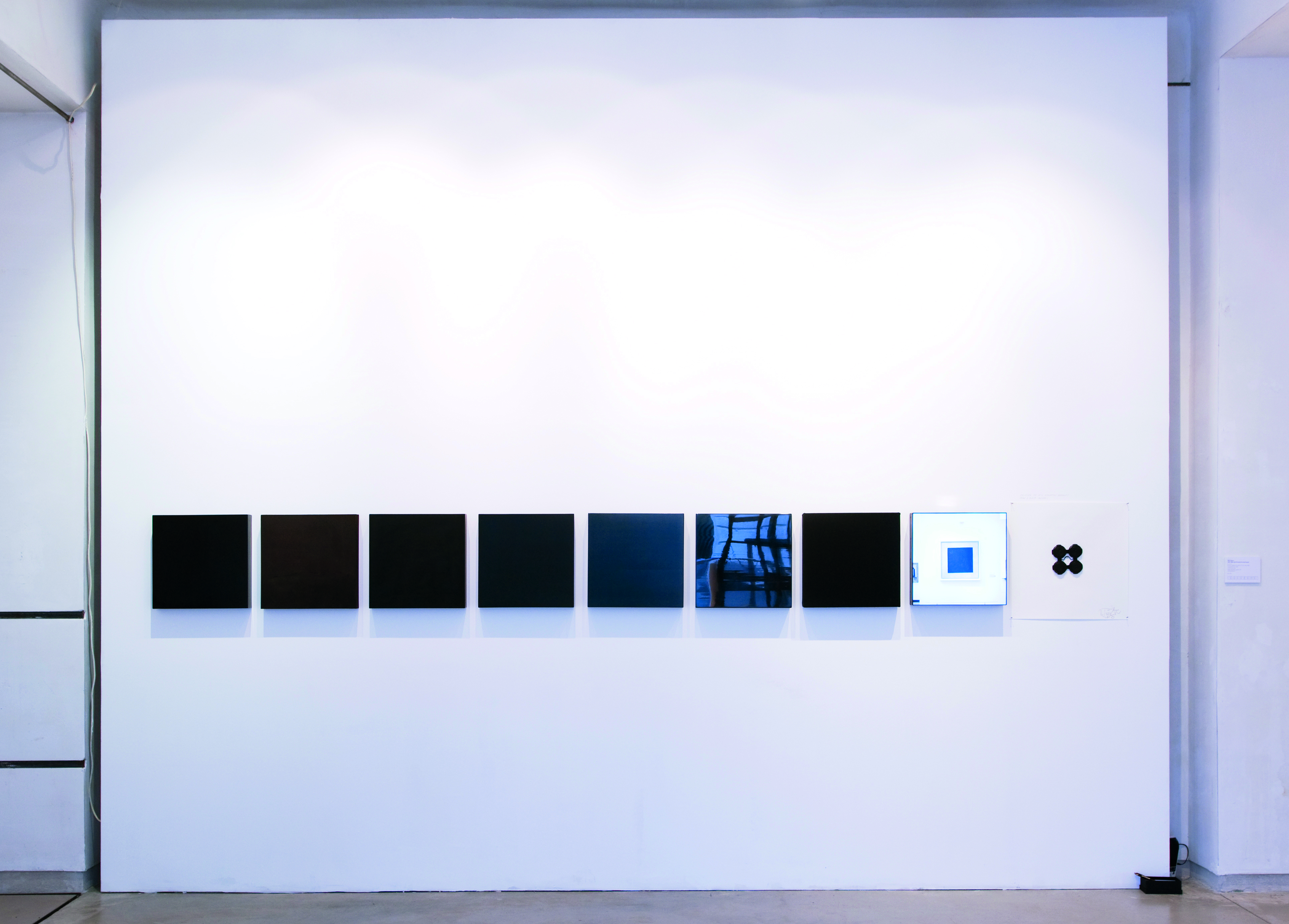
Astrid Edlinger, 100 Black Squares, narration, 2015

Astrid Edlinger, 100 Black Squares, 1915 - 2015
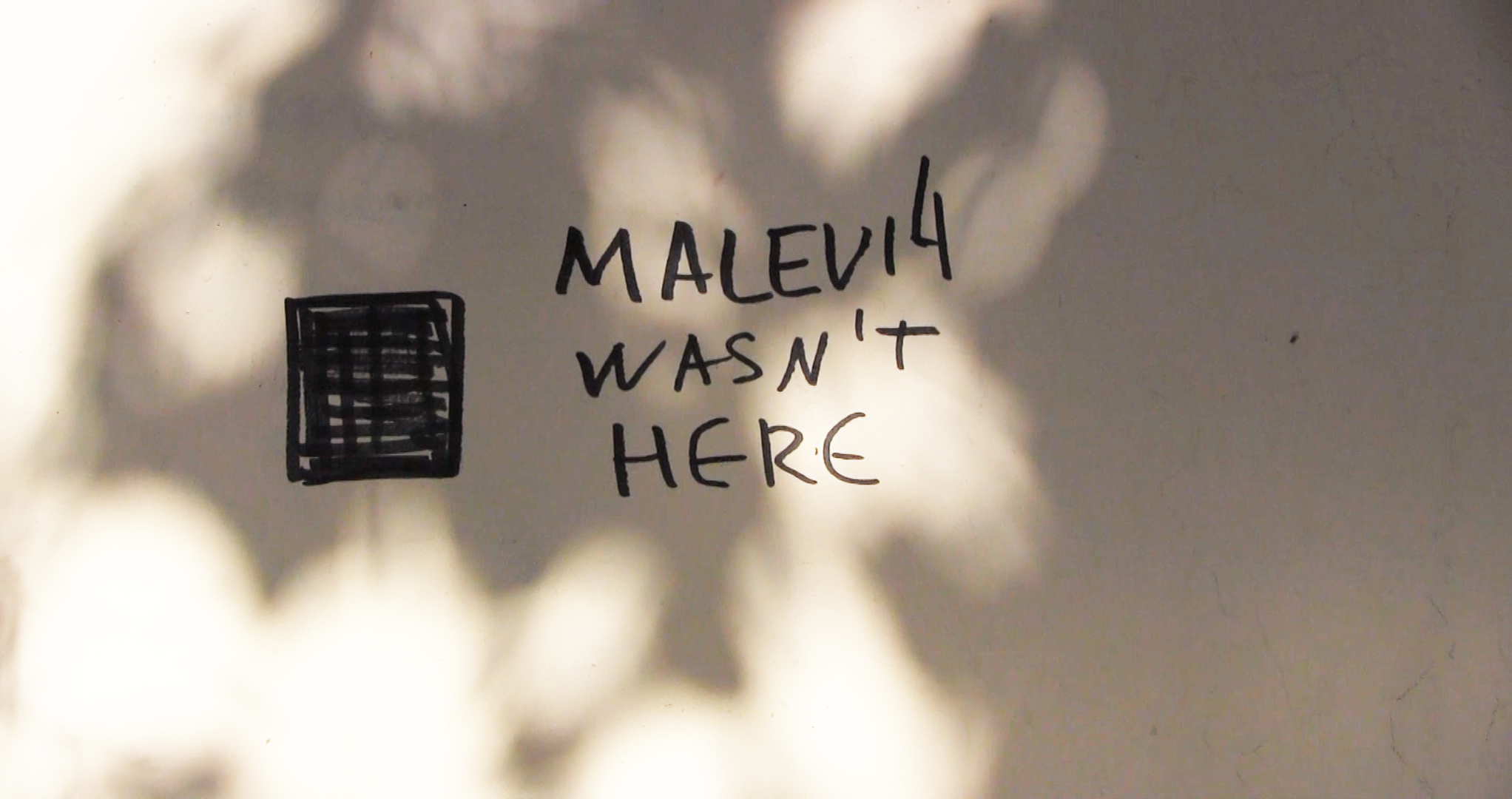
Astrid Edlinger, 100 Black Squares, video still
On the last day of my Russian journey I met Natalya again. About three weeks ago she had met me at Belorusskaya Station and over the next couple of days showed me her favorite spots in Moscow. At dinner she mentioned that in one place, the rear wall of burnt-out café bilingua, she had discovered some graffiti; a black square, with writing next to it mentioning Malevich. I had to see this! So after dinner Natalya took me there, crisscrossing the nocturnal streets of Moscow until, in a wildly romantic back alley at the back of the café annexe, there it was: a quickly scribbled black square and the sentence »MaleviЧ wasn‘t here«. (Interestingly the character Ч – which is pronounced ch – was the only character in cyrillic script, while the rest of the writing was in English.) I was excited! Unfortunately it was too dark for recording, besides I didn‘t bring my video-camera. However, I tried to remember the name of the street: Bankovskiy Pereulok. The next morning I pondered what to do – my flight left in the early afternoon, giving me a couple of hours to try and relocate the graffiti. It wasn't easy. Natalya knew Moscow like the back of her hand and when I had followed her I hadn't paid attention to the route. I wandered around, a little lost. According to the map Bankovskiy Pereulok should be somewhere near, at one moment the streetcorners seemed familiar, the next they didn't. I had almost resigned myself to giving up - after all I didn't want to miss my flight - when I finally turned the right corner. Instantly I recognised the large billboard that hung above the windows on the facade of burnt-out bilingua… After I had finished the recording I even had time for a quick breakfast in a nearby café. Then I headed back to Dom na nabereschnoi, the House on the Embankment where I had stayed during my time in Moscow, to get my luggage. Then, as I approached the metro station Chistye Prudy I heard some wonderful music; it was faint at first but gradually became louder. Suddenly everything felt enchanted. Perhaps my memory deceives me, but I remember that morning as being initially cloudy and grey; now though the sun broke through and as an imaginary camera tracked me across the small plaza to the front of the metro entrance an invisible director cued this final soundtrack to my Russian journey. Tango-sounds from another world, in another time. The music came from a speaker outside a small CD-shop. Casually I entered and asked, using my few words of Russian, what it was. »Russian dance and easy listening music from the 30's and 40's!« was the reply. I bought the CD and the song Vstretchi by Klavdiya Schulzhenko now accompanies the camera as it slowly and shakily approaches the graffiti.
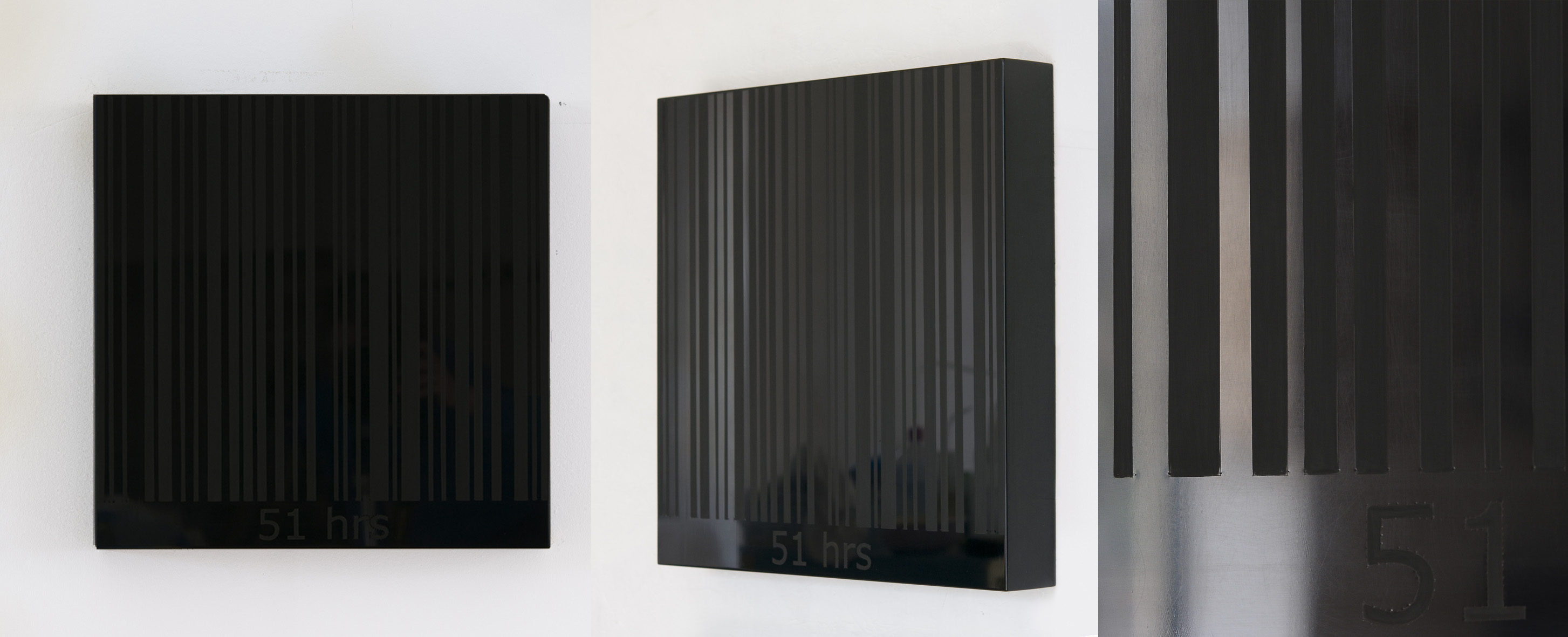
Astrid Edlinger, 100 Black Squares, square #58. Urushi lacquer on kiri wood, 40 cm x 40 cm
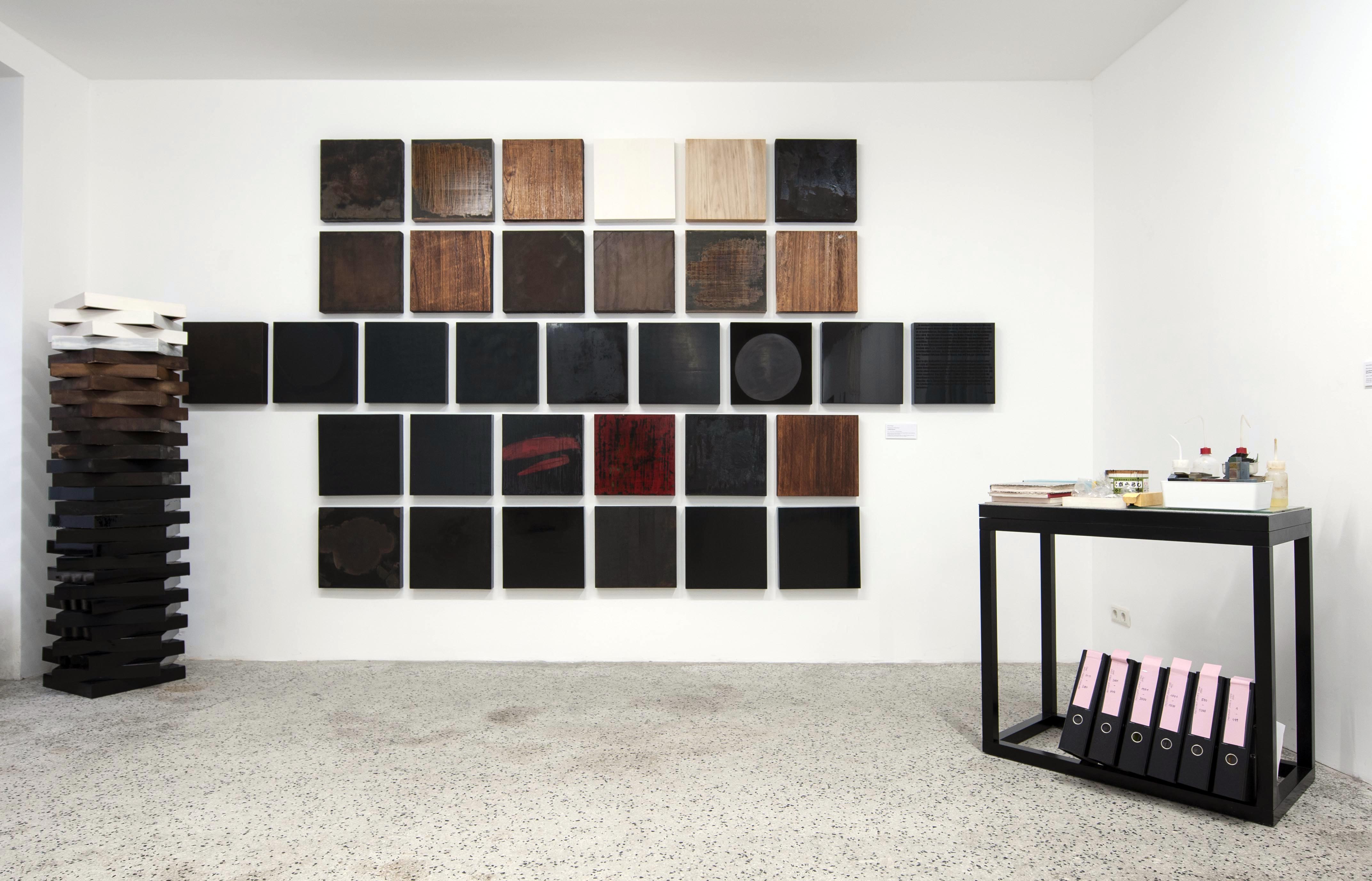
Astrid Edlinger, 'Black Squares and Black Boxes', exhibition view 2019
